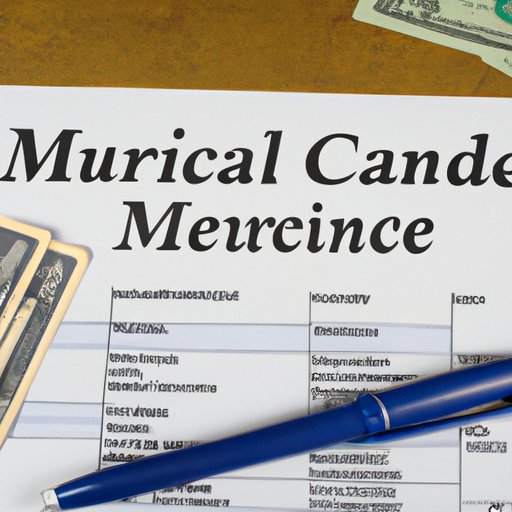Introduction
Medicare is a federal health insurance program that provides coverage to individuals aged 65 and over as well as certain disabled individuals. It is designed to help cover the costs of medical care, including hospital stays, doctor visits, and prescription drugs. Understanding how much Medicare insurance costs can be tricky, as there are various plans with different levels of coverage and cost structures. This article will explore the different types of Medicare insurance coverage and compare rates across different plans.

Exploring Different Types of Medicare Insurance Coverage
Medicare is divided into four parts: Part A, Part B, Part C, and Part D. Part A covers inpatient hospital care, skilled nursing facility care, hospice care, and home health care. Part B covers medically necessary services and preventative care, such as doctor visits, lab tests, and durable medical equipment. Part C (also known as Medicare Advantage) is an alternative to Parts A and B that is offered by private insurers. It typically combines both hospital and medical coverage and often includes additional benefits such as dental, vision, and hearing coverage. Part D covers prescription drug costs.
In addition to the four parts of Medicare, individuals may also choose to purchase supplemental insurance plans. These plans provide additional coverage for expenses not covered by the base Medicare plans, such as copayments and coinsurance. Supplemental plans are offered by private insurers and vary in cost and coverage.
Comparing Medicare Insurance Rates Across Different Plans
The cost of Medicare insurance varies depending on several factors. Age and location are two of the most influential factors in determining rates. Generally, older individuals tend to pay higher premiums than younger ones. Location can also impact rates; individuals living in rural areas usually pay lower premiums than those in urban areas.
The type of plan chosen is another factor that affects the cost of Medicare insurance. Part A is typically free for individuals who have paid Medicare taxes while working, while Part B requires a monthly premium. Part C and Part D plans usually have monthly premiums as well, and supplemental plans may have additional costs.
It is important to consider the financial implications of choosing a particular plan. Many people choose to pay higher premiums in exchange for more comprehensive coverage. However, it is important to make sure that the coverage is worth the cost. Individuals should carefully research the different plans available and compare costs and coverage before making a decision.
Conclusion
Understanding how much Medicare insurance costs can be a daunting task. However, by understanding the different types of coverage available and comparing rates across different plans, individuals can make informed decisions about their coverage. Factors such as age, location, and plan type can all impact the cost of Medicare insurance. It is important to consider the financial implications of each plan and make sure that the coverage is worth the cost.
(Note: Is this article not meeting your expectations? Do you have knowledge or insights to share? Unlock new opportunities and expand your reach by joining our authors team. Click Registration to join us and share your expertise with our readers.)
